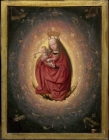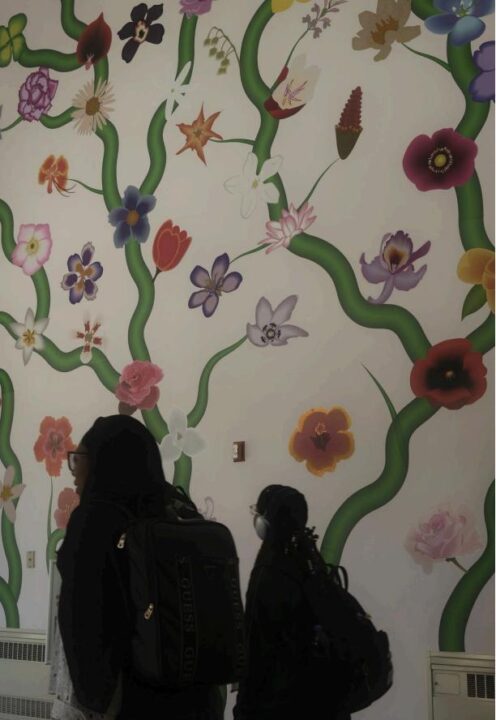In one exhibition, The Walters Art Museum has transformed five gallery spaces into five worlds. “A Feast for the Senses: Art and Experience in Medieval Europe” encourages visitors to appreciate art on multiple sensory levels, rather than with sight alone.
Immediately, guests are sent into a medieval garden with the towering “Tapestry with Narcissus at the Fountain” and “The Garden of Love and Lover Sleeping, in Le Roman de la Rose,” an illustration in the 13th century love poem “The Romance of the Rose” told as a dream sequence.
“Gardens were a place of perfect sensation,” said Curator Martina Bagnoli. The works are enhanced with a soundbite of birds chirping.
Following, there is a gallery called, “The Senses Imagined” and “Moralized Sensation” both of which focus on the interconnection between cognition and sensory experience in medieval theory and the influence of the senses on morality, respectively.
“The point was to be able to walk that fine line between sin and enlightenment because of the senses,” said Bagnoli.
“A Sense of God” shows how each sense was factored into the medieval religious experience. This part of the exhibition is the most interactive as guests can smell incense wafting through the air, hear a soundscape of a bell that is also on view in the exhibition and touch a recreation of a scented medieval rosary.

Here hangs one of the most fascinating works in the exhibition, “The Glorification of the Virgin,” which shows the Virgin Mary holding the Christ child ringing a handbell, haloed in light and surrounded by darker angels playing heavenly music.
Bagnoli commented on this piece and how it merges the sounds of the bells and the music of the angels, saying, “It’s a sound that’s deafening and scary at the same time because it is the sound of God.”
At the end of this section of the exhibition, the idea of the fluidity between “sin and enlightenment” is again brought up. There are multiple pieces that depict or represent the wounds of Christ, each with unique erotic undertones.
Many of these items were worn for protection, like the “Roll with Magic Figures and the Five Wounds of Christ” which was worn during childbirth. Others were kissed or touched during prayer, like “The Five Wounds of Christ, in the Loftie Hours” where evidence of this touch can be seen on the parchment.
Then, Bagnoli transports visitors into a completely different atmosphere. This gallery is where the literal interpretation of the “feast” from the title of the exhibition really comes into play, as ornately decorated silverware and dishes are displayed, as well as scenes from medieval banquets in different mediums.
Finally, guests are taken through medieval bodily care, courtship and games before reaching “Body and Soul: Gardens of Love.” Here, the exhibition comes full circle, as visitors are reminded of that very first tapestry with a video playing on a loop that was shot in a medieval-style garden.
In “A Feast for the Senses: Art and Experience in Medieval Europe” Bagnoli and the Walters exhibition team have not only created a more accurate way to experience medieval art, but have also pieced together a narrative that allows visitors to understand medieval life in a completely new light.
“A Feast for the Senses: Art and Experience in Medieval Europe” will be on display at The Walters Art Museum until Jan. 8, 2017.
Editor’s note: Meghan Allis is an intern at The Walters Art Museum.


